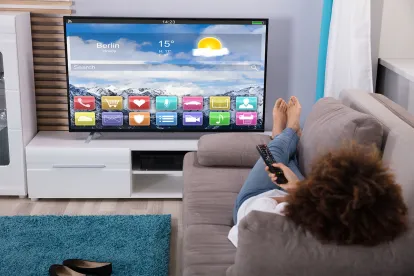The European Commission (EC) has adopted a new set of eco-design requirements for ten categories of energy-consuming products, including refrigerators, washing machines, and televisions pursuant to the Ecodesign Directive (2009/125/EC). Under the new Ecodesign Regulations for Electronic Displays, the use of halogenated flame retardants in electronic display enclosures and stands will be prohibited effective March 1, 2021. The new Ecodesign Regulations applicable to electronic displays and certain categories of household appliances will also impose reparability requirements on manufacturers and importers of covered products placed on the market in the EU beginning March 1, 2021.
Ban on the Use of Halogenated Flame Retardants and New Information Disclosure Obligations
Annex II of the new Ecodesign Regulations for Electronic Displays, adopted by the EC on October 1, 2019, impose a new set of “material efficiency” requirements on covered electronic displays, effective March 1, 2021. Under Point D, Paragraph 4 of Annex II, the use of halogenated flame retardants will be prohibited in the enclosures and stands of electronic displays. “Halogenated flame retardants” is defined in the Regulation as a flame retardant (i.e., “a substance that markedly retards the propagation of a flame”) containing any halogen. The Regulation will apply to all electronic displays, including digital signage displays, computer monitors and televisions, with a screen area greater than 100 square centimeters (or 15.5 square inches).
According to the EC, this prohibition is necessary to address recycling issues caused by the presence of halogenated flame retardants in the plastic components of electronic displays. Several industry groups have opposed the ban, arguing that its adoption was procedurally flawed and questioning whether the EC has the legal authority to restrict chemical substances under the Ecodesign Directive.
The new Ecodesign Regulations for Electronic Displays also impose marking requirements on manufacturers and importers that are aimed at informing the public of the chemicals contained within certain component parts of covered electronics. The new marking requirements include the following obligations:
-
Marking plastic components to specify the type of polymer used.
-
Marking plastic components to specify the use of flame retardants (by using the symbol “FR”).
-
Marking electronic displays to indicate whether the screen panel contains cadmium in certain specified amounts. If any homogenous material part of an electronic display contains cadmium in a concentration by weight exceeding 0.01%, as defined in the EU RoHS Directive, the product must be affixed with a “Cadmium inside” logo. If the concentration values are below 0.01% by weight, the product must be affixed with a “Cadmium free” logo.
These new restrictions in the EU targeting halogenated flame retardants follow a 2017 U.S. Consumer Protection Safety Commission announcement of intention to restrict the use of halogenated flame retardants in certain types of consumer products, including electronic casings. More recently, the Washington Department of Ecology also announced that organhalogen flame retardants in electronics are on its preliminary list of chemical-product combinations that will be evaluated for potential priority designation under the state’s new Safer Products for Washington Program.
Right-to-Repair Obligations
The new Ecodesign Regulations for Electronic Displays, Household Refrigerators, Dishwashers, Washing Machines and Washer-Driers, and Refrigerating Appliances with a Direct Sales Function also impose reparability requirements on manufacturers and importers of covered products. The new requirements, which go into effect on March 1, 2021, generally fall into three categories:
-
The availability of specified spare parts, which must be made available to end users and professional repairers for certain minimum time periods.
-
Access to specified repair and maintenance information for use by professional repairers to enable maintenance work on covered products.
-
Information availability requirements on free access websites that include, among other things, detailed instruction manuals, and the availability of software and firmware updates for use by end users and third parties.
According to the EC’s press release on the new EcoDesign Regulations, the Regulations’ reparability requirements are the first of their kind in the EU and are intended to contribute the EU’s “circular economy objectives by improving the life span, maintenance, re-use, upgrade, recyclability and waste handling of appliances.”





 />i
/>i

